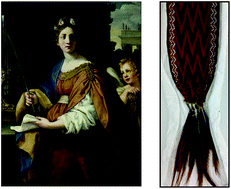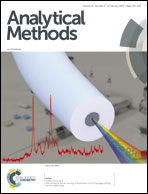Historical mystery solved: a multi-analytical approach to the identification of a key marker for the historical use of brazilwood (Caesalpinia spp.) in paintings and textiles†
Abstract
Dyes derived from brazilwood (Caesalpinia spp.) are known to have been used in a diverse range of objects, from Medieval European textiles to North American First Nations objects, while pigments made from brazilwood feature in the palette of a number of painters, including Rembrandt and Van Gogh. For almost two decades, an unknown marker has been used to detect brazilwood colourants in historical objects. Limited sampling opportunities mean that the identification of the chemical structure of this marker has eluded scientists to date. Using a combination of synthesis, UPLC-ESI-MS/MS, HPLC, NMR and GC-MS, the identity of this unknown marker was confirmed as the benzochromenone, urolithin C. Structural identification provides a reliable reference compound for use across a range of analytical techniques employed in the cultural heritage sector and will enable the future development of non-destructive techniques for its identification on high-status objects.

- This article is part of the themed collection: Analytical Methods Recent HOT articles


 Please wait while we load your content...
Please wait while we load your content...